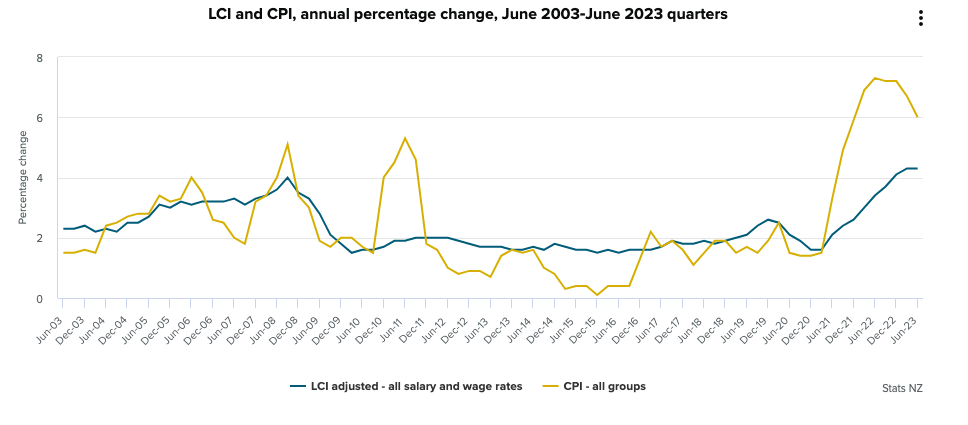The LCI is up 1% from the previous quarter

Wage cost inflation, as measured by the labour cost index (LCI), remained unchanged at 4.3% in the year to the June quarter, fresh Stats NZ figures showed.
“Annual wage costs continued to increase at historically high rates this quarter, equal to the 4.3% annual increase last quarter,” said Bryan Downes (pictured above), business prices delivery manager.
The graph below showed how LCI compares with CPI (consumer inflation or the change in the prices of goods and services brought by households). Note that these indexes don’t compare directly with household income and cost of living, respectively.

In the year to the June quarter, the unadjusted LCI rose 5.9%. Stats NZ said the unadjusted LCI tends to rise at a higher rate than wage cost inflation, as it includes market costs and factors such as employees’ individual performance or years of service.
To illustrate, if an employee gets a pay rate rise due to the rise in cost of living, that would be reflected in both the adjusted LCI, which is the primary measure of wage cost of inflation, and unadjusted LCI. But if the pay rate rise is received for quality reasons, such as in recognition of good performance, this would only be reflected in the unadjusted LCI.
Average ordinary time hourly earnings, as measured by the Quarterly Employment Survey (QES), meanwhile, jumped by 6.9% to $39.53 year-on-year. This figure is the mean value of wages and salaries paid per hour excluding overtime in jobs measured by the QES, so it can rise or fall as the type of work being done changes, Stats NZ said.
Wage cost inflation by sector
The LCI lifted 1.1% in the June quarter, a 1% rise from the previous quarter. Private sector wage rates increased 1.1%, while public sector wage rates rose 0.6%.
“Public-sector wage inflation tends to be driven by collective agreements across broad industry and occupation groups and can therefore be subdued in quarters when no major pay settlements occur,” Downes said.
“However, in the year to June 2023 quarter, both public and private-sector wage cost inflation were closer to each other, up 4.2% and 4.3%, respectively.”
In the private sector, average ordinary time hourly earnings in the QES lifted 1.9%. The public sector, meanwhile, saw a 0.7% rise.
Minimum wage increase
On April 1, the NZ government increased the country’s minimum wage from $21.20 per hour to $22.70 per hour.
“The largest contribution to the LCI in the June 2023 quarter came from the retail trade and accommodation industry, up 1.5% on a quarterly basis, following a rise of 0.7% last quarter,” Downes said. “The rise in minimum wage was a core driver for the increase in wage growth in this industry over the quarter.”
But the minimum wage increase accounted for a relatively small proportion of pay rises overall across all industries, as more respondents cited factors such as cost of living, matching market rates, and/or retaining or attracting staff, Stats NZ reported.
Use the comment section below to tell us how you felt about this.



